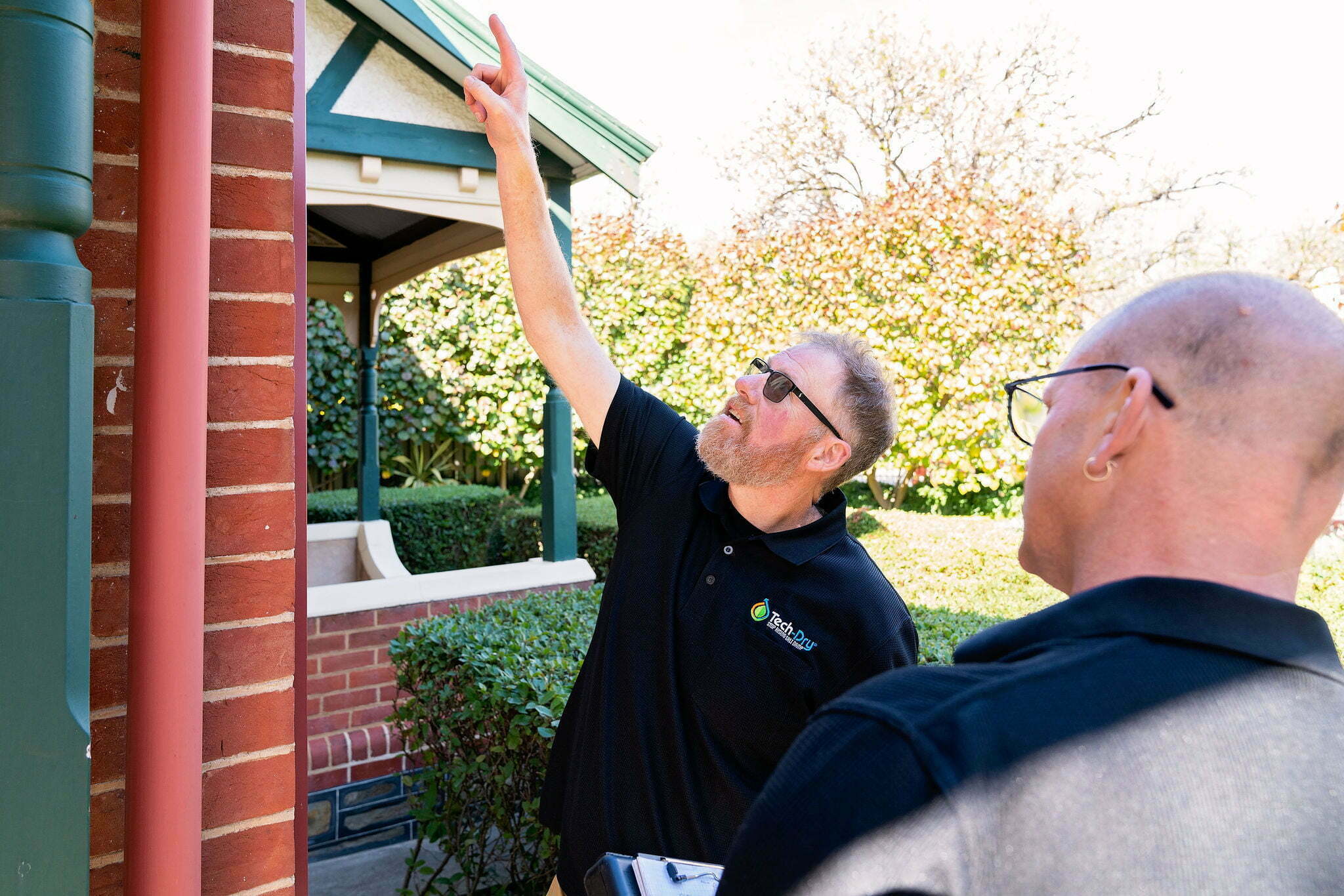Buying a new home? That’s really exciting!!! And going to an open inspection is one of my favourite things. It’s exciting and nerve-wracking, especially when you think it could be the one. Will it live up to its online photos? What if it’s a dump or a lemon? And this fear means there is so much to look at in such a limited time. Add to that the pressure of a hot market and many other people looking simultaneously.
But there are some red flags that you should always be on the lookout for. Especially in older homes. Issues that could cost you time or money down the track. For your peace of mind and to prevent any surprises later on, why not take an extra 5 minutes during the open house and check for some of the issues below?
INSIDE:
- Is there any mould on the walls, ceilings or skirting boards? (Most of the time, this will appear as black or grey spots)
- Are the skirting boards rotting? Or are metal door frames rusty at the bottom?
- Is the ceiling sagging in any areas?
- Are the window frames timber? If so, do they appear in good condition? Any sign of rot?
- Has the property recently been painted? (Not always a red flag, as vendors will often do this to freshen up the home before sale, but it can also be a sign that they are trying to cover up some mould, salt damp or signs of a leak)
- Any cracks in the wall? Check around door frames/window frames/ corners of the room. Look at the cracks. Do they run long or deep? Or are they particularly wide?
- Are there musty smells in any of the rooms?
- Are they burning candles in the house? (Again not always a red flag, but it could be used as a tactic to mask musty smells)
- Is any paint blistering or bubbling at the base of the wall in any room?
- Check the walls on the other sides of the bathroom, toilet and laundry. Any signs of loose paint, blistering plaster or peeling wallpaper?
OUTSIDE:
- How do the drain pipes, gutters and roof look? Are they in good condition? Are there any areas with holes or not attached properly? Are the drain pipes connected, or do they allow water to run off into gardens, pot plants etc.?
- Is there any evidence of rust or damage to exposed water pipes?
- How old and big is the hot water service? Can’t find one? Find out from the agent if there is one in the ceiling or on the roof.
- How old are the solar panels?
- Is the home built after 1970 and built with bricks or stone? Can you see visible black plastic everywhere around the perimeter of the home and garage? Especially check this on rendered pillars.
- Is there crumbly mortar, or has the face blown off the bricks/stones? Are there any areas of white powdery residue in the mortar or on the stones? Is there evidence of brick powder at the base of the wall?
- Are there any white furry salts on concrete foundations?
- Are cracks on the exterior brick or stonework walls? Check the verandah also. Look at the cracks. Do they run long or deep? Or are they particularly wide?
- Are any areas of the home built below ground – e.g. cellar or garage built into the hill? This type of construction can cause lateral dampness problems in the home that can be difficult to rectify.
- If possible, see if the neighbour’s property sits higher than yours. Again something to consider as it can create issues from inadequate drainage.
- Do the exterior paths slope towards the walls?
Please note we are not suggesting that the presence of any / all of these issues mean you shouldn’t buy the property. Each property is unique and therefore an issue in one property wont be an issue in another.
Instead, we would highly recommend that you consider getting further advice. Ask for another inspection and take a family member or friend that you trust that knows something about these issues. Or request a PrePurchase Building Inspection / Salt Damp Inspection / Pest Inspection during your cooling off period or prior to any auction so that you can further understand the issues, the costs involved to rectify them and how the issues may impact you and the your enjoyment of the home.
This is also not a definite full guide. Other issues can/will/do exist and therefore we would always suggest engaging a non-biased fully qualified pre-purchase building inspector to buying another property.

